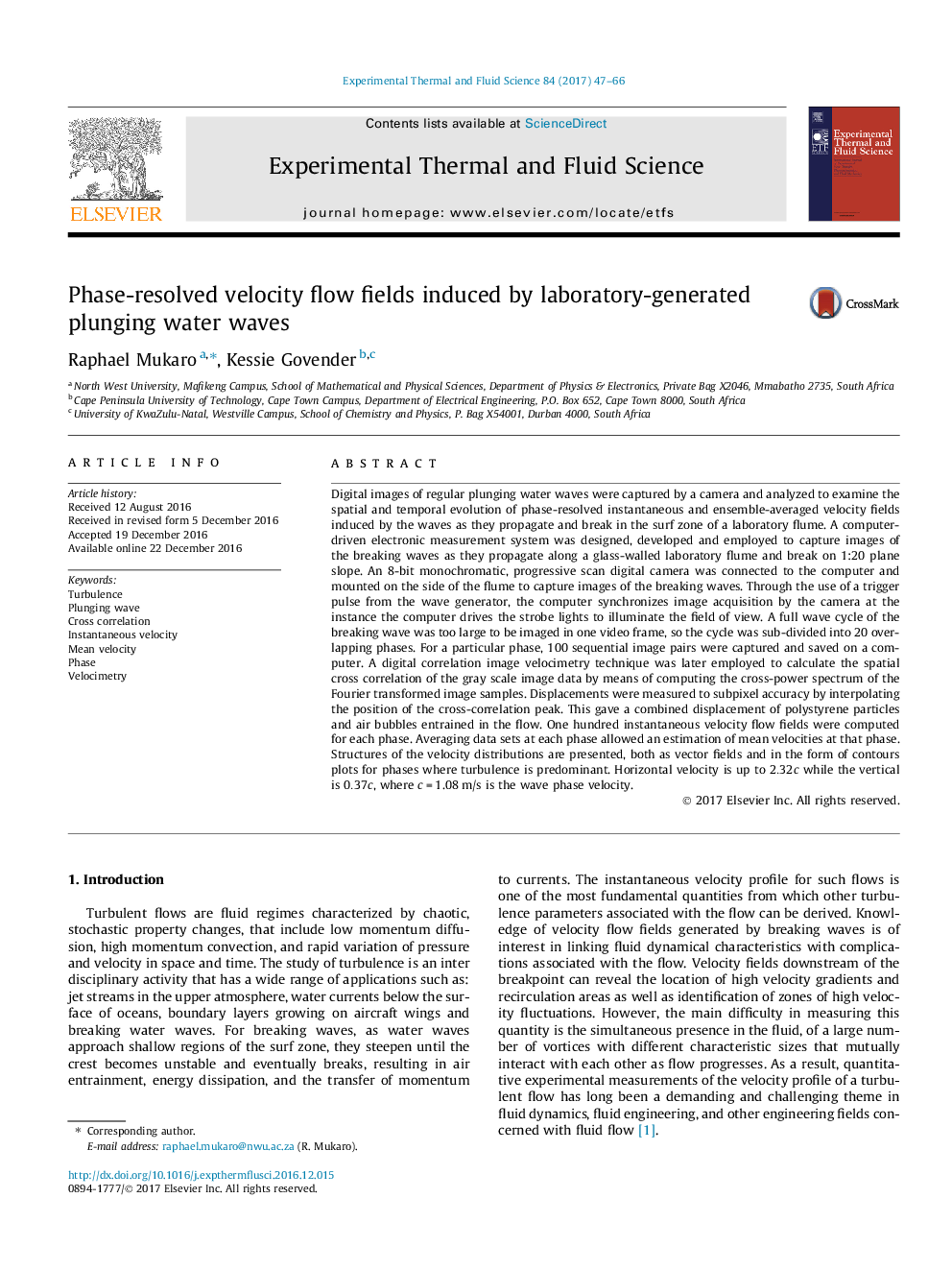| Article ID | Journal | Published Year | Pages | File Type |
|---|---|---|---|---|
| 4992625 | Experimental Thermal and Fluid Science | 2017 | 20 Pages |
â¢Grayscale images of plunging waves were captured with a digital camera at 20 phases.â¢Velocity fields were extracted from the images using signal processing techniques.â¢Peak horizontal and vertical velocity components are 250 and 40 cm/s, respectively.â¢Peak average horizontal velocity component occur above shear boundary layer.â¢The vertical component shows two plumes propagating shoreward at 80 and 40 cm/s.
Digital images of regular plunging water waves were captured by a camera and analyzed to examine the spatial and temporal evolution of phase-resolved instantaneous and ensemble-averaged velocity fields induced by the waves as they propagate and break in the surf zone of a laboratory flume. A computer-driven electronic measurement system was designed, developed and employed to capture images of the breaking waves as they propagate along a glass-walled laboratory flume and break on 1:20 plane slope. An 8-bit monochromatic, progressive scan digital camera was connected to the computer and mounted on the side of the flume to capture images of the breaking waves. Through the use of a trigger pulse from the wave generator, the computer synchronizes image acquisition by the camera at the instance the computer drives the strobe lights to illuminate the field of view. A full wave cycle of the breaking wave was too large to be imaged in one video frame, so the cycle was sub-divided into 20 overlapping phases. For a particular phase, 100 sequential image pairs were captured and saved on a computer. A digital correlation image velocimetry technique was later employed to calculate the spatial cross correlation of the gray scale image data by means of computing the cross-power spectrum of the Fourier transformed image samples. Displacements were measured to subpixel accuracy by interpolating the position of the cross-correlation peak. This gave a combined displacement of polystyrene particles and air bubbles entrained in the flow. One hundred instantaneous velocity flow fields were computed for each phase. Averaging data sets at each phase allowed an estimation of mean velocities at that phase. Structures of the velocity distributions are presented, both as vector fields and in the form of contours plots for phases where turbulence is predominant. Horizontal velocity is up to 2.32c while the vertical is 0.37c, where c = 1.08 m/s is the wave phase velocity.
